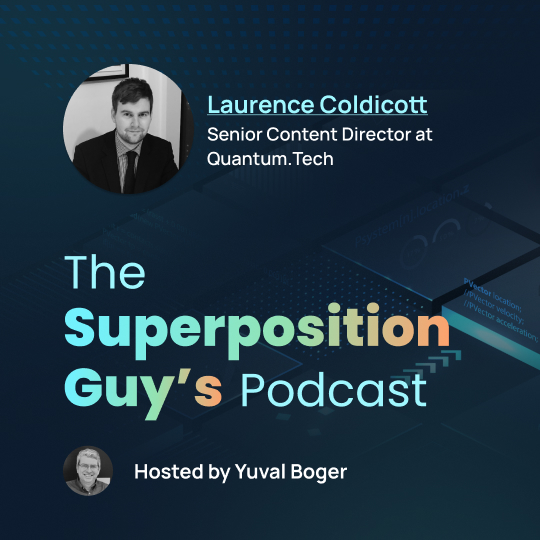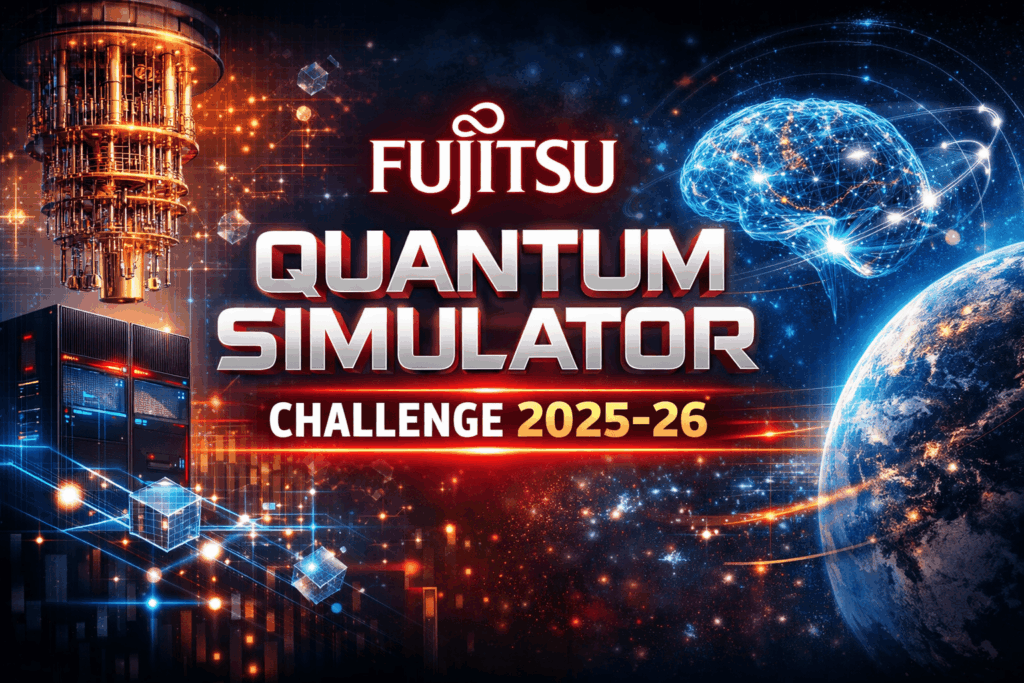Quantum chess is an idea that’s been toyed with for years, with fans of quantum computing viewing quantum computer chess as an ideal way to not only lay out the basics of quantum mechanics for the uninitiated but to push the limits of quantum computing into previously unexplored directions.
But what is quantum chess and how the heck do you play it?
What is Quantum Chess?
“The idea behind quantum chess is to bring unpredictability into chess,” says Selim Akl, professor of Queen’s University’s School of Computing, one of the originators of the game.
Back in 2010, Akl and his student Alice Wismath set out a plan for how quantum chess could not only be theorized but brought into reality using reality-bending concepts: quantum mechanics. They devised a workable version of the game to play either between human and computer or human to human.

Since then others have taken up the challenge and created with different forms with varying quantum chess rules and structures. But the gist has always been the same: to show how the fundamental principles of quantum mechanics can find their way into one of the world’s oldest and most engaging board games.
The Essence of Quantum Chess
The story begins with a few of the central tenets of quantum mechanics, namely, superposition, entanglement and the observer effect. All three of these dramatically set off the quantum view of reality from both Newtonian physics and relativity theory, and all three feature in quantum chess.
And for many, the idea is that if game creators can alter the rules of chess to reflect these quantum concepts, we’ll have not just a fun spinoff of chess on our hands but an instructional tool to elaborate on these basic principles.
Bridging Chess and Quantum Mechanics
Let’s take superposition, the phenomenon which says that quantum systems can exist in multiple states at once. That’s an impossibility by classical systems, of course, which says that a particular Rook can’t be moving horizontally and vertically while also moving diagonally like the Bishop. However, research has shown that quantum particles like electrons can exist in multiple states simultaneously – they can be in a superposition of spin-up and spin-down states, for instance, and it’s only when observed or measured that these particles collapse into one of their possible states.
It’s definitely a mind-bending concept to wedge into this 1400-year-old board game, one which normally has Knights, Bishops, Pawns and so on clearly occupying fixed positions and movesets on a board.
But what if they’re not?
The Unpredictability Factor
“[A chess piece] exists on the board in both locations until a measurement later in the game decides the outcome. The existence of superposition allows pieces to become entangled so their locations are intertwined,” says another pioneer of quantum chess, Chris Cantwell.
And so, with chess pieces now free to be in two places at once, the game takes on a level of unpredictability in what is considered a very deliberate game. It’s not exactly like inserting a pair of dice into play but it nonetheless requires players to adapt to the possibility that their queen may currently be on D1 … or not.
Origins and Evolution of Quantum Chess
The evolution of computing has long been associated with chess, of course, with one of the earliest-envisioned tests for computing power being how well a machine could play the game up against a human.
That debate went on for decades in the mid-20th century until IBM’s Deep Blue defeated world champion Garry Kasparov in 1997. Since then, computers have moved onto other territories, leaving today’s chess players to gauge how good a particular human-made move is by seeing what the chess computer (the engine) would’ve played in its place.
Akl and Wismath break ground
And it was that very scenario of humans being left behind when it comes to one of the world’s great board games that drove Akl to propose a quantum version of chess, one which through its introduction of superposition into the game might once again give humans a leg up on the machines.
Here’s Akl speaking of Wismath’s version of the game: “Experiments have shown that indeed Quantum Chess is an ‘equalizer’, as witnessed by the fact that humans indeed had a fighting chance against the computer.”
But it wasn’t just a desire to give humans a boost that pushed quantum chess’ evolution forward. Cantwell saw the game as a perfect vehicle for bringing quantum theory to the masses.
Cantwell – Quantum Chess in Popular Culture
In 2014, Cantwell started playing around with the idea of devising, as he called it, a way for players to interact with quantum phenomena “in a tactile way.”
And through a partnership with the California Institute of Technology, he had by 2016 not only a practical version of quantum chess but also a load of good luck on his side.
At the time, Caltech was putting together an event to celebrate the legacy of renowned physicist Richard Feynman. And what better way to do it than through a cinema-worthy staging of a quantum chess match between actor Paul Rudd and … wait for it … Stephen Hawking.
The resulting video – called Anyone Can Quantum and narrated, naturally, by Keanu Reeves – is hilarious, and the exposure juiced interest worldwide in quantum chess.
But is quantum chess actually playable? The answer is yes.
How to Play Quantum Chess?
Let’s look at these two versions of how to play quantum chess, starting with Wismath’s. The setup is the same as regular chess: an 8×8 board, black and white squares and sixteen pieces each.
Wismath’s Quantum Chess
The gameplay starts with pieces in their traditional positions, with the quantum chess rules stipulating that all pieces except the two kings begin in a state of quantum superposition, meaning they have a quantum (and thus unknown) state or classic (known) state.
Pieces move in their traditional ways (Bishops on the diagonal, for example, and Rooks moving vertically and horizontally) and they can capture opposing pieces in the usual fashion. The trick is that each piece’s superposition (except the King’s) is a mystery, randomly assigned by the quantum chess program. Further, once a player touches a piece in a quantum state it “collapses” like a quantum particle into one of its two possible (and measurable) states.
Other rules flesh out Wismath’s game, such as when a piece is on a white square it has only its classic, fixed position but when it lands on a black square it takes a quantum transition into superposition. But it all ends in the same fashion, with the capture of the opponent’s King.
Cantwell’s Rules for Quantum Chess
For a different take, Cantwell chose to feature probability more prominently in quantum chess. Superposition means that a particle can be thought to have moved and not moved at the same time, and Cantwell saw that to adequately express that in chess would mean to talk about more than one possible configuration of pieces on the board – in effect, more than one chess board.
For instance, if a player moves a piece in superposition, say, a Bishop at C1 to G5, what happens is there is a 50% probability that the Bishop has moved to G5 and a 50% probability that it hasn’t moved at all: two boards, one with the Bishop at C1 and one with it at G5.
Entanglement and Observation in Quantum Chess
In their own ways, these two quantum chess variants seem to capture the reality of superposition. But what about entanglement? A concept that, bizarre as it may seem from our everyday view of the world, is the state of one quantum particle being related to and impacted by (entangled with) another particle, regardless of the distance between them.
That’s in Cantwell’s version, too, since one piece’s superposition may or may affect the options available to other pieces. Say you’re moving your D2 Pawn to D4. That would open up a diagonal for your C1 Bishop to head out to F4 or G5. But that means the Bishop’s probability to be at G5 crucially depends on whether or not the D2-D4 Pawn move actually took place. Again, multiple boards of possibility and probability.
In a nutshell, things get complicated fast. Fortunately, Cantwell’s game employs measurement as one way to simplify the game.
Just like the fact that observation of qubits (quantum bits) will affect their states, so goes with quantum chess pieces. In this case, when two pieces in one of the possible boards find themselves occupying the same square, the probability of each being there will determine that one or the other piece will take that space. Moreover, it’ll resolve any previous entanglements related to that space.
All that is just a taste of where quantum chess can take you. But while the physics seems to be well represented, is it fun?
Quantum Chess Strategy and Play
The most obvious knock against quantum chess is it inserts randomness into a game that for many has its allure due to the lack of (in one sense) chance. Chess is deliberate and predictable: it is just you and your brain (and your opponent’s brain). But in quantum chess, players don’t fully know where the pieces are or will be, and while that may work as a representation of the science, it certainly makes for tough gameplay and tactics.
Fans of quantum chess point out that strategy truly does feature through the estimation of probabilities, and while that’s definitely true, it is still unsure if there’s enough player control over outcomes to make the game worthwhile and widespread.
Online Quantum Chess Community: Platforms and Tournaments
The reception quantum chess has received so far in the gaming community portrays a science project still trying to find its feet.
A true quantum chess tournament was held at the 2020 Q2B conference on quantum computing, with AWS’ Aleksander Kubica coming away as the victor. Kubica continued his streak and repeated the feat in 2021 against Google Quantum AI’s player Seneca Meeks.
But after those initial events, interest in the game appears to be leveling off.
Take Chess.com, for one – the world’s most popular platform for playing chess – which while it does have a page for fans of quantum chess, there is nothing on it other than a link to another gaming platform, Steam, where, so far, player reviews have been “mixed.”
The Future of Quantum Chess
So what does the future hold for quantum chess? With only a couple of serious stabs at it and a dedicated yet modest fan base, there appears to be tons of room for growth and improvement. If anything, it is a fun and engaging way of learning the counterintuitive “woo science” underpinning quantum computing and our reality at the atomic level.
FAQs
- What is the concept of Quantum Chess?
Quantum Chess takes some of the main principles of quantum mechanics and makes up a version of the classic board game.
- Can a quantum computer solve chess?
The jury is still out on whether solving chess – in other words, finding the optimal move from every possible position – is something quantum computers will be able to handle. But great strides have been, and are made, to use quantum computers’ strengths in solving NP-hard problems fitting the move sets and optimization in chess.
- Can I play quantum chess?
You don’t need a degree in physics to play quantum chess, but knowing how classic chess is played will definitely help.
- Where can I play quantum chess?
The PC gaming platform Steam has made a version of quantum chess available.
- Is the quantum realm a real thing?
Yes, quantum mechanics has been tested plenty by scientists over the years, so it’s real.
- What is the point of quantum chess?
In part to be a casual hobbyist project for scientists, but also to learn the ropes of quantum mechanics and the system’s underlying quantum computing in a fun and engaging way.
For more market insights, check out our latest quantum computing news here.

![What is Quantum Chess [The Rules and How to Play Guide]](https://thequantuminsider.com/wp-content/uploads/2023/10/What-is-Quantum-Chess.png)















